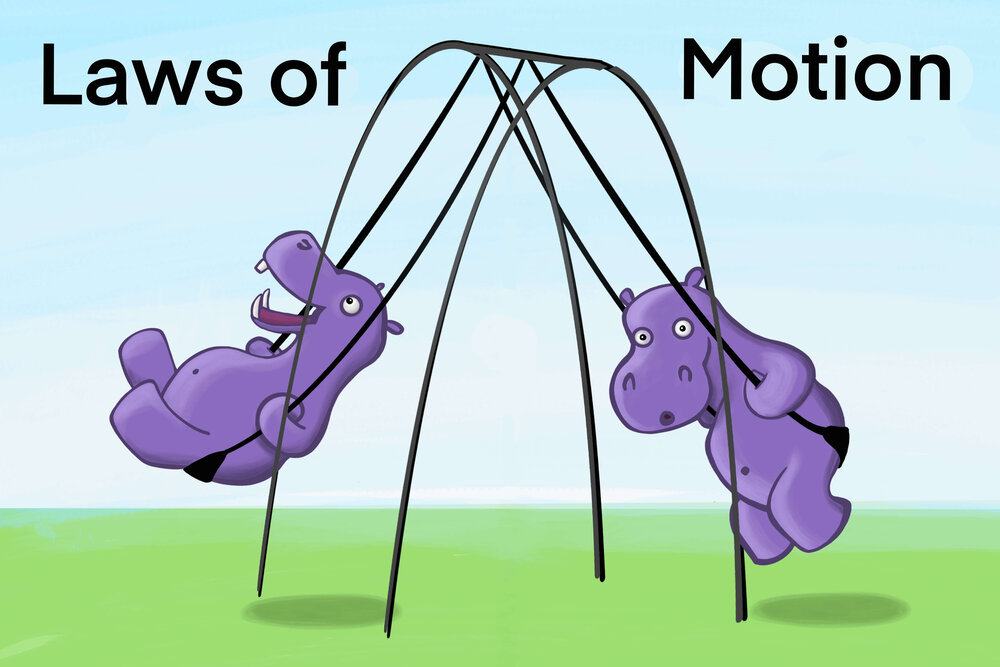Study Guide: The Pendulum

Potential Energy
Potential energy is an important form of energy in physics. Potential energy is stored energy that can be converted back into kinetic energy at a later time. Examples of potential energy include: gravitational (such as a pendulum at the top of it’s swing), electrical (such as a charged capacitor), magnetic (such as induction in an electric current) and nuclear (such as the strong force holding the nuclei of atoms together).
Gravitational Potential Energy
Gravitational potential energy keeps track of work done against gravity. For example, when we bike up a hill, we are probably going slow at the top after working hard to get there. What did all that work do? Was it wasted? Some of it was. The work done against friction, that was converted into heat in the gears, bearings and tires. But a lot of the work didn’t go into friction. It went into going up the hill. We say that it was stored in gravitational potential energy. We can convert it back into kinetic energy by coasting back down the hill.
If we move a distance $d$ against a force $F$ we do work, $W = Fd$. The idea of gravitational potential energy is a way to keep track of the work we do against gravity.
Entropy
We don’t talk about potential energy with work done against friction because friction is a non-conservative force. It’s hard to recover kinetic energy from work done against friction. It is lost as heat. This is also known as entropy. Many scientists believe the universe will eventually end in heat once all potential energy from all events have completely worked themselves out and been converted into heat.
Gravity, on the other hand, is a conservative force, We can recover ALL of the work done against gravity back into kinetic energy. Potential energy is used to keep track of work done against conservative forces.
Conservation of Energy: The Swing
Swings and the flying trapeze are examples of one of the classic problems of physics: the pendulum. Hanging a weight from a string and making it swing may seem simple, but the pendulum is a classic example of a nonlinear oscillator, and it is actually very difficult to solve its exact motion. However, the application of conservation of energy allows us to get some important answers without having to know the details.
Armed with the concept of gravitational potential energy, we can answer a simple question about a swing (or pendulum or flying trapeze). If you release it from rest a height $h$ above the bottom, how fast will it be going at the bottom?
At the top, the mass is at rest, so its kinetic energy $K = 0$. Let’s set $y = 0$ to be at the bottom of the swing. The mass is released at a height $y = h$, so it has gravitational potential energy $U = mgh$. The basic idea is that total energy is conserved:
$$ E = U + K = constant = mgh $$As the mass swings down, it picks up as much kinetic energy as the potential energy it loses. One can therefore calculate $K$ at any height. At the bottom of the swing, $U = 0$, so $K = mgh$, which can be solved for $v$ using $K = $\frac{1}{2}mv^2$:
$$v = 2gh$$Note that the speed doesn’t depend on mass. A big object has the same speed as a small object if released from the same height.
Oscillation Period
Another important aspect of a pendulum is the swing periodthe time it takes to go through a complete swing. This is used in “grandfather” clocks, for example, as a timing source. Just as the speed of the bob at the bottom is independent of mass, the oscillation period is also independent of mass, because mass cancels out of the equations. The oscillation period does depend on starting height, but weakly; in fact, for small oscillations, the oscillation period is independent of starting height (called amplitude):
But, because the pendulum is a nonlinear oscillator, its period changes as the swing amplitude gets large. It is therefore very important for an accurate clock pendulum to have small swings.
Equations
- Gravitational potential energy: $U = mgy$
- Conservation of total energy: $E = U + K = constant$
- Small amplitude swing period: = $2\frac{l}{g}$
Summary
- Potential energy keeps track of work done against conservative forces.
- Potential and kinetic energy transfer back and forth in swing motion while total energy is conserved.
- Since a pendulum is a nonlinear oscillator, it’s oscillation period depends on swing amplitude.


